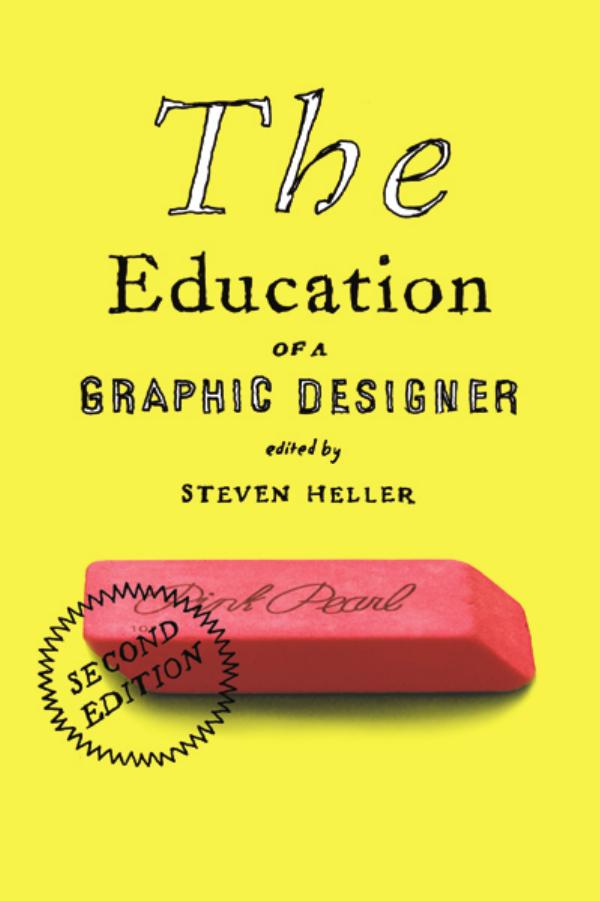The Education of a Graphic Designer by Steven Heller

Author:Steven Heller
Language: eng
Format: epub, pdf
Publisher: Allworth Press
Published: 2015-03-14T04:00:00+00:00
33
Writing Now: Journalism, Criticism, Critical Journalism
Rick Poynor
This is the opening broadside from a review of the book Barthes for Beginners, published in Britain’s weekly design magazine:
The last time I checked everybody I knew had studied Roland Barthes at art college. From media studies to graphic design courses, the theory lectures were full of words like “semiotics” and “structuralism,” usually taught by someone in unmatching socks. If there was a single culprit for this drivel then his name was Roland Barthes.
Those of us who actually attended the lectures might remember that Barthes also has much to say on the nature of pleasure and sexual non-conformity, and applied his ideas on communication to every area of culture and life—from fashion and popular culture to classical French literature and homosexuality. . . . If all that sounds interesting but a bit too much like hard work, there’s a new book . . . that should get you through the most demanding cross-examination on the man’s life and works.1
Note how the writer tries to have it both ways. She wants us to appreciate that she knows about Barthes and takes it for granted that her reader will know about him, too: Oh yes, we have all studied Roland, but only the kind of nerd who is so out to lunch he can’t even match his socks would take the man and his confreres so seriously. Our reviewer affects an air of superiority to Barthes, putting him squarely in his place for his “drivel,” yet she and her editor seem to feel the need to inform us about this book. Overall, despite the ambivalence of its opening paragraphs, the review is fairly positive.
The most interesting aspect of an extract that is in tone by no means untypical of Britain’s design press is the would-be flattering but ultimately patronizing way in which it pictures the reader. It appears to offer insight, but declines to risk anything like a genuine discussion by someone with something worth saying about Barthes and design, preferring to play it for laughs. Who, one wonders, does this publication suppose are its readers, and what does it think they know already, or would like to learn? Slightly rephrased, these are two key questions now facing graphic design criticism as it struggles to be born: Who is the emerging criticism for? And what is it for?
The answers used to be breathtakingly straightforward. Here is the British designer Ashley Havinden, addressing the question, “Does Today’s Criticism Help Design?” in 1952:
The role of the serious critic is that of an educator. By searching out the many examples of good design and appraising them constructively, he may convince the manufacturer or the printer of the merits of good design associated with his product. In the same way he may succeed in inspiring the shopkeeper with the desire to offer good design to the public. Such constructive criticism in the press would teach the public, not only to appreciate, but to demand good design in the products they buy.
Download
The Education of a Graphic Designer by Steven Heller.pdf
This site does not store any files on its server. We only index and link to content provided by other sites. Please contact the content providers to delete copyright contents if any and email us, we'll remove relevant links or contents immediately.
Wonder by R.J. Palacio(8508)
Mastering Adobe Animate 2023 - Third Edition by Joseph Labrecque(3812)
Unlabel: Selling You Without Selling Out by Marc Ecko(3622)
Ogilvy on Advertising by David Ogilvy(3548)
Hidden Persuasion: 33 psychological influence techniques in advertising by Marc Andrews & Matthijs van Leeuwen & Rick van Baaren(3515)
Drawing Cutting Edge Anatomy by Christopher Hart(3483)
The Pixar Touch by David A. Price(3389)
POP by Steven Heller(3325)
The Code Book by Simon Singh(3122)
The Art of War Visualized by Jessica Hagy(2971)
Slugfest by Reed Tucker(2968)
The Curated Closet by Anuschka Rees(2940)
Rapid Viz: A New Method for the Rapid Visualization of Ideas by Kurt Hanks & Larry Belliston(2866)
Stacked Decks by The Rotenberg Collection(2841)
365 Days of Wonder by R.J. Palacio(2784)
The Wardrobe Wakeup by Lois Joy Johnson(2754)
Keep Going by Austin Kleon(2725)
Tattoo Art by Doralba Picerno(2620)
Tell Me More by Kelly Corrigan(2618)
